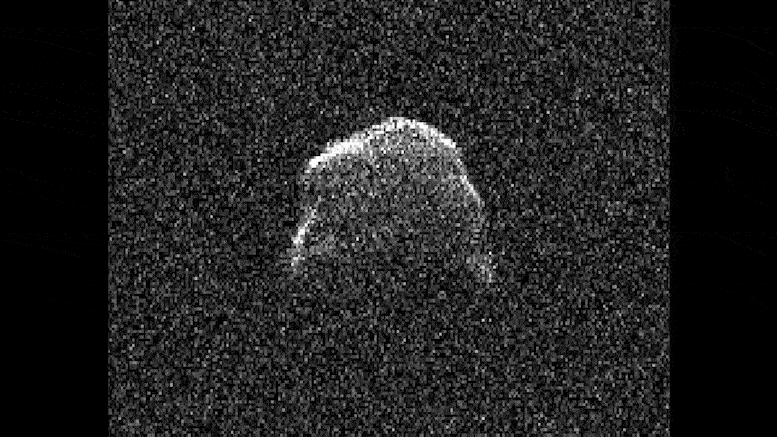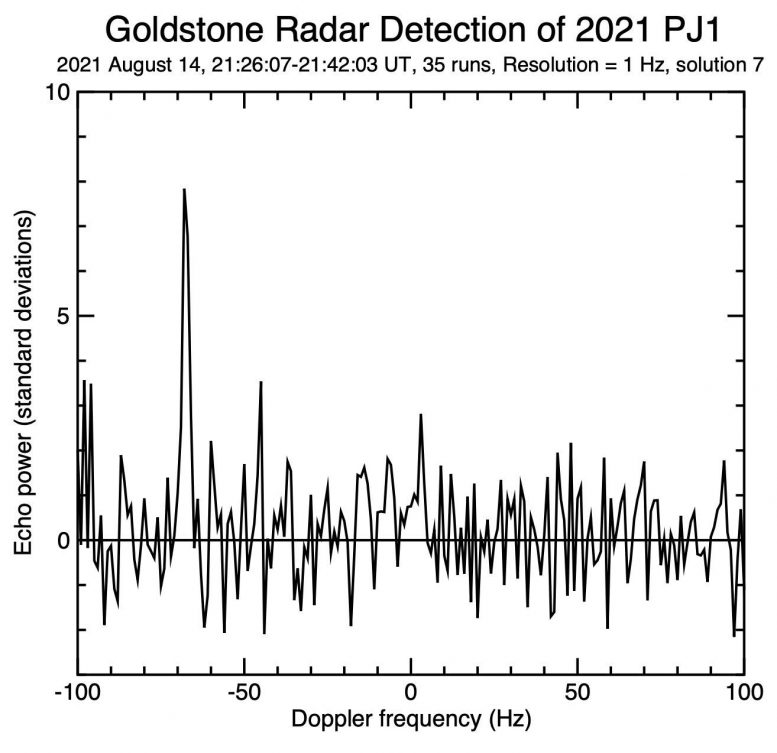1,000th Near-Earth Asteroid Observed by Planetary Radar Since 1968

This animation shows asteroid 2016 AJ193 rotate as it was observed by Goldstone’s 70-meter (230 foot) antenna on Aug. 22, 2021. Three-quarters of a mile (1.3-kilometers) wide, the object was the 1,001st near-Earth asteroid to be measured by planetary radar since 1968. Credit: NASA/JPL-Caltech
Seven days after this historic milestone, a massive antenna at 1566 Icarus in 1968, this powerful technique has been used to observe passing NEAs and comets (collectively known as near-Earth objects, or NEOs). These radar detections improve our knowledge of NEO orbits, providing the data that can extend calculations of future motion by decades to centuries and help definitively predict if an asteroid is going to hit Earth, or if it’s just going to pass close by. For example, recent radar measurements of the potentially hazardous asteroid Apophis helped eliminate any possibility of it impacting Earth for the next 100 years.

This figure represents the radar echo from asteroid 2021 PJ1 on Aug. 14, 2021. The horizontal axis represents the difference in predicted Doppler frequency and the new radar measurement. Credit: NASA/JPL-Caltech
In addition, they can provide scientists with detailed information on physical properties that could be matched only by sending a spacecraft and observing these objects up close. Depending on an asteroid’s size and distance, radar can be used to image its surface in intricate detail while also determining its size, shape, spin rate, and whether or not it is accompanied by one or more small moons.
In the case of 2021 PJ1, the asteroid was too small and the observing time too short to acquire images. But as the 1,000th NEA detected by planetary radar, the milestone highlights the efforts to study the NEAs that have passed close to Earth.
“2021 PJ1 is a small asteroid, so when it passed us at a distance of over a million miles, we couldn’t obtain detailed radar imagery,” said Lance Benner, who leads NASA’s asteroid radar research program at NASA’s Jet Propulsion Laboratory in Southern California. “Yet even at that distance, planetary radar is powerful enough to detect it and measure its velocity…
Read More: 1,000th Near-Earth Asteroid Observed by Planetary Radar Since 1968
